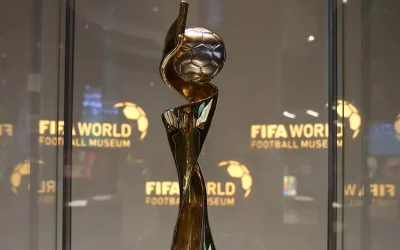In 1989, the German women’s national team won the first ever official UEFA Women’s EURO on home soil. While the players secured their place in the history books, they did not benefit financially from their success. The idea of decent pay for women playing football still seemed unthinkable back then. As a reward for their performance, the German Football Association (DFB) offered each player a coffee set – seemingly more useful for women than a few pounds! Since then, the coffee set has become a symbol of the condescension that women’s football has endured for a long time. However, the tide has now turned, as demonstrated by the Women’s EURO in Switzerland. Every player participating in the tournament will receive a reward. Even if they lose all three games, nobody will return home with empty pockets.
Player agency on the rise at the women’s Euro
This is thanks to a new UEFA rule. Federations must now give 30–40% of their prize money to the players. This is just one example of how player agency has improved in women’s football. From pregnancy rights to good training conditions and pay, players are standing up for themselves. And rightfully so, since they are at the heart of the game. It is their skills, personalities and likeability that have driven the success of women’s football in recent years.
Now, they will receive a good share of the revenue, as prize money has increased significantly for this EURO. In previous tournaments, prize money already steadily rose up. In 2013, the total prize money for the tournament was just €2.2 million, increasing to €8 million four years later. The record-breaking EURO 2022 saw the teams earn €16 million in total. For this year’s tournament, UEFA has almost tripled the prize money again, bringing it up to a total of 41 million.

Of the total prize money, UEFA has allocated 70% to participation fees. Each team participating in EURO 2025 will earn 1.8 million euros. This is almost as much as the total prize money available in 2013. This participation fee means that each player competing in EURO 2025 will earn at least €23,000. For players in non-professional leagues, who still make up the vast majority of European leagues, this will provide a significant financial boost. “We make that investment because we know of the symbolic meaning of prize money, but also because these mechanisms are for us the very symbol of solidarity”, says Nadine Kessler, UEFA’s director of women’s football.
Prize money in women’s football increases globally
The European champions could earn prize money of up to €5.1 million if they win every match. While these figures pale in comparison to the total prize money of 331 million euros for the last men’s EURO in Germany, they represent a significant increase compared to previous tournaments. The Euros are far from the only tournament to see significant increases recently. At the 2023 FIFA World Cup, the teams competed for a prize pool of $110 million — a staggering 266% increase compared to the 2019 World Cup, where only $30 million was at stake. Similarly, the prize money in the Champions League has exploded, as participants now make at least €400,000. Reaching six figures was a rarity for most teams a couple of years ago.
“We want everyone who contributes to the success of the tournament to be rewarded”, says Kessler. “We invest more, despite not making money from the Women’s EURO, because it’s the right thing to do.” While this mentality allows for growth in the present, federations will seek to make a profit from women’s tournaments at some point. How this might affect prize money remains a question for the next tournaments.
UEFA’s “Unstoppable” Strategy: Aiming higher
For now, UEFA has made it clear that the Women’s EURO is only one small part of a bigger picture. The federation has committed to investing over a billion dollars in women’s football by 2030. The goals of the new strategy “Unstoppable” are ambitious. They include: Six fully professional leagues, making football the number one sport for girls and women in every European country and attracting new fans. The EURO will undoubtedly help to achieve these goals, with fans from all over the world flocking to Switzerland. More than 85% of EURO tickets have already been sold. While a sold-out tournament seems unlikely at this point, it does mean that the previous attendance record of 574,865 fans at the historic tournament in England will likely be broken. It seems that the only way for the EURO is up.
Text: Helene Altgelt



